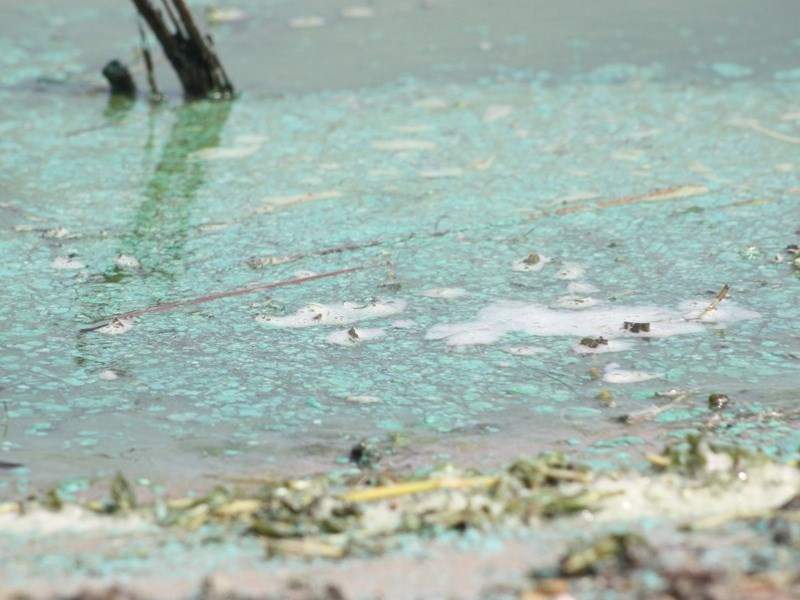ATHABASCA— Two blue-green algae advisories have been issued by Alberta Health Services (AHS) for Baptiste Lake west of Athabasca and Skeleton Lake east of Boyle.
Blue-green algae blooms, also known as cyanobacteria, are naturally occurring and often become visible when weather conditions are calm. They appear like scum, grass clippings, fuzz or globs on the surface of water.
As the name implies, cyanobacteria can be blue-green in colour, but it can also be greenish-brown, brown and/or pinkish-red. It often smells musty or grassy.
People who come into contact with visible cyanobacteria or who ingest water containing it may experience skin irritation, rash, sore throat, sore red eyes, swollen lips, fever, nausea, vomiting and/or diarrhea.
Symptoms usually appear within one to three hours and resolve in one to two days, though they may be more pronounced in children. As well, exposure to cyanobacteria can be fatal to pets.
As such, visitors and residents living near the shores of both lakes are advised to avoid all contact with cyanobacterial blooms. If contact occurs, wash with tap water as soon as possible.
Do not allow pets to swim or wade in any areas where blue-green algae blooms are visible.
Human consumption of fish or fish trimmings from Baptiste Lake and Skeleton Lake should be limited, as fish are known to store toxins in their liver. Also, pets should not be allowed to eat fish or fish trimmings from either lake.
Contaminated water from either Baptiste or Skeleton Lake should also not be used to water edible plants, particularly those with edible parts exposed to the ground surface like cabbage or tomatoes.
Also, AHS advises that the boiling of contaminated water will not remove the toxins produced by cyanobacteria, so an alternate source of drinking water should be provided to pets and livestock while this advisory is active.
If you suspect a problem related to contact with blue-green algae, you may contact Health Link at 8-1-1.



